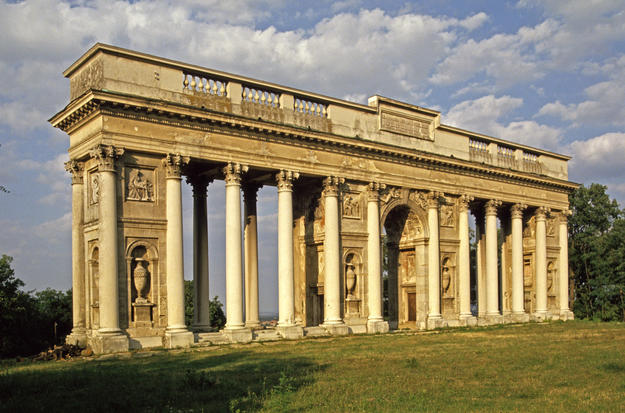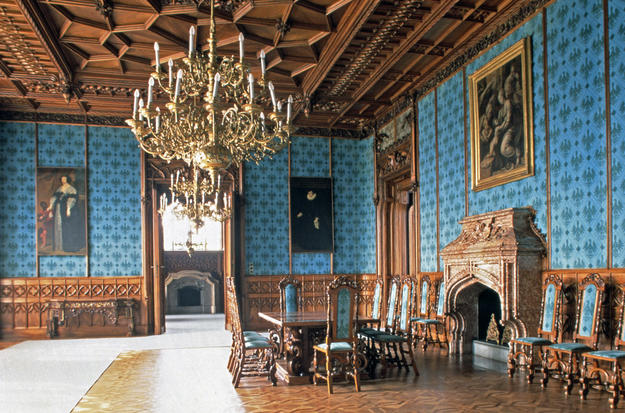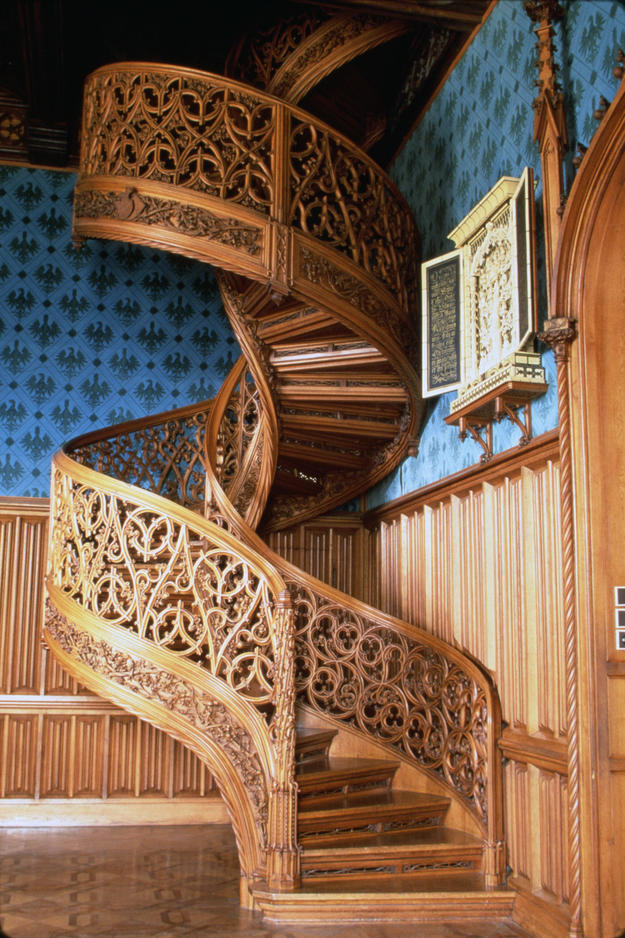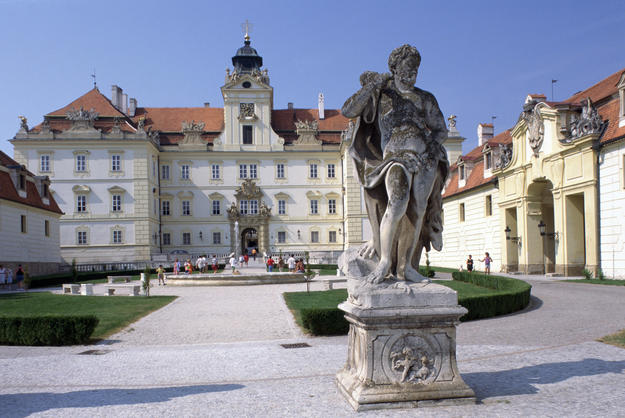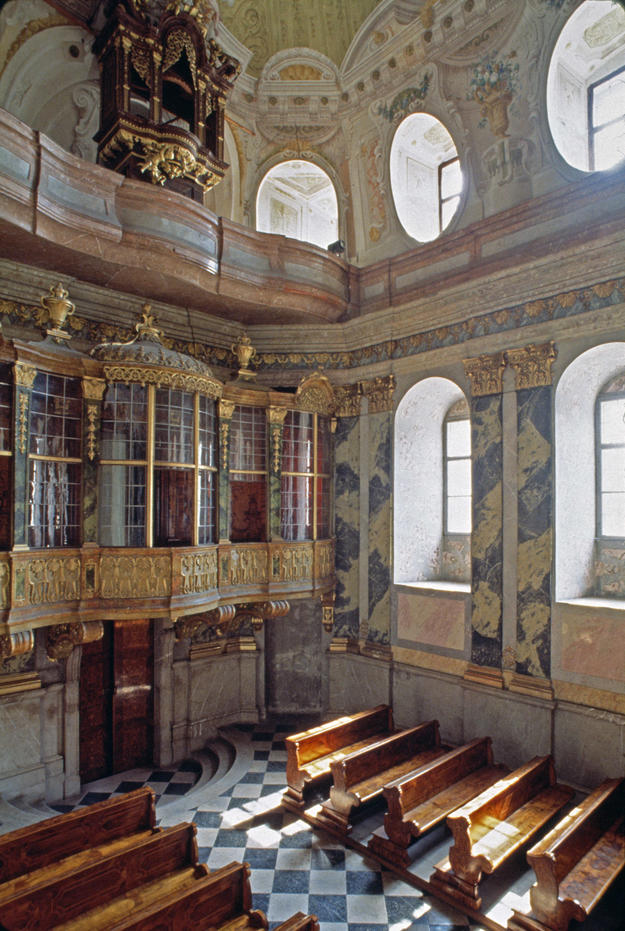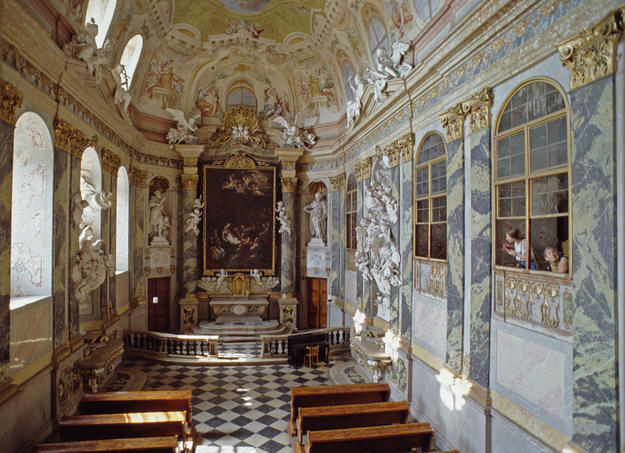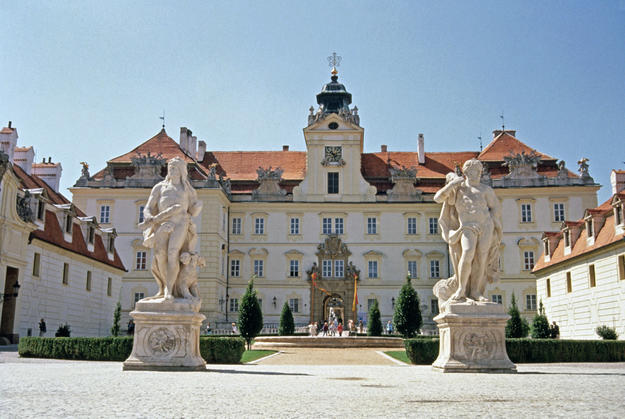Lednice and Valtice Cultural Landscape
Over the centuries, the rural countryside between the southern Moravian towns of Lednice and Valtice had been a landscape divided by shifting national borders, scarred by conflicts like the Thirty Years War. However it was also slowly unified by the continued building campaigns commissioned by the Liechtenstein family. Beginning in 1249, the Liechtensteins acquired the Lednice zamek, or manor house, and they soon purchased the Valtice zamek to the north. Over the next 500 years, the Liechtensteins developed the two chateaus and surrounding park with a series of additions and reconstructions. Under the direction of Duke Jan Josef I (1760–1836), the vast property became an architectural landscape. From the late 18th century into the first half of the 19th, a series of subsidiary summer houses, chapels, monuments, and other structures were built and linked by landscaped sightlines throughout the property.
1998 World Monuments Watch
In summer 1993, WMF organized a charrette, the objective of which was to draft a management plan for the conservation, development, and continued stewardship of the Valtice zamek and its dependencies. Two dozen international experts from a range of specialties, including architectural conservation, landscape architecture, classical music and arts festival planning, site interpretation, economic development, and natural and cultural tourism, met to discuss the status of the zamek and its surrounding environs. A second charrette was organized in August 1994 to discuss strategies for the Lednice zamek. Because of the scale of conservation needed throughout the park, WMF opted to initiate a pilot project at the Rendezvous Folly to serve as both a discovery process and model for effective future conservation techniques for the numerous other follies within the Lednice-Valtice Cultural Landscape. Additional projects at select follies such as the Valtice Chapel and Lednice conservatory were undertaken afterwards.
The Nazi occupation of Czechoslovakia forced the Liechtensteins to flee to their sovereign principality and, with their departure, almost seven centuries of stewardship and cultivation of the Lednice-Valtice landscape abruptly ended. With the advent of the postwar communist era, the chateaus and various follies like the neoclassical Colonnade, once considered the gateway into Moravia, were divided on the other side of the Iron Curtain. When the Cold War ended, members of the preservation community within the Czech Republic called upon World Monuments Fund to help take action and revive the endangered landscape. Intervention could not have come at a more important time. Preservation experts gathered at the 1993 WMF-sponsored charrette agreed that the Lednice and Valtice Cultural Landscape was “nothing less than the earliest and most extensive designed landscape surviving in Central Europe.” Through the efforts of this preservation movement, the constant sense of division and transformation that characterizes Lednice-Valtice’s history has been overcome by the unity and structure still imparted by the surviving architectural landscape.

